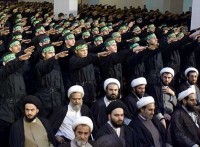
With the recent defeat of the Liberation Tigers of Tamil Eelam (LTTE), the distinction of being the world's most sophisticated and globalized terrorist group has passed to the Lebanese Shiite group Hezbollah. Yet many observers reasonably argue that this has always been more innovative and powerful than the LTTE. Moreover, the Tigers were a limited threat to the Western World, but this is not true of Hezbollah.
In the last fifteen years, Hezbollah - both on its own account and as a proxy of Iran - has undergone a rapid expansion beyond the Middle East. Its recent entry into the cocaine trade will make it more dangerous yet, particularly inside North America. The danger it poses must not be underestimated.
The Fundamental Facts of Hezbollah
For centuries, the Shiites of what is now Lebanon were a poor under-educated minority and often excluded from playing key roles in that country's complex multicultural plurality under the Sunni Ottoman Empire and the French Mandate of 1919-1946. The multicultural constitution that came with Lebanon's independence kept the Shiites as a weak minority.
There is a price for multicultural constitutions and Lebanon paid it in their 1975-1990 Civil War when the Palestinians (particularly the PLO), Syrians and Israelis joined the Christians, Druze and Sunnis in tearing the country apart. This tiny country - with a 2009 population of 4.2 million - lost around 200,000 dead during their complex Civil War; with a corresponding high price in economic damage and lost infrastructure.
At first the Shiites were poorly armed, less organized, and had less to fight for other than to attempt to defend against the PLO. This started to change after the 1979 Iranian Revolution when proponents of the radical Khomeinist ideology began missionary work among Lebanon's Shiites and provided arms. Many Shiites welcomed the Israeli Defence Forces (IDF) as liberators when they invaded south Lebanon in June 1982 to crush the PLO. The IDF overstayed its welcome after Arafat's ouster from Lebanon in August 1982. Shiites increasingly listened to the radical demagogues from Iran, accepted their weapons, and saw Israel's South Lebanon defence zone as an occupying force.
Not surprisingly, Iran soon sent help to the Shiites in the form of 1,500 members of its Iranian Revolutionary Guard Corps (IRGC) into the Bekka Valley outside the Israeli defence zone to assist with training and supply.
With this largess Hezbollah soon emerged from a splinter of the Amal Militia and pledged itself to Iran's revolutionary ideology.
The exact relationship between the nascent Hezbollah, the IRGC, and the Islamic Jihad Organization (which claimed responsibility for several notorious acts of terrorism in Lebanon in 1982-84) have never been entirely clear. Imad Mughniyah was associated with all three and led many key Hezbollah operations until his death by car-bomb in Damascus in February 2008.
The history of Hezbollah's activities inside Lebanon and against Israel is extensive and has been well documented elsewhere.
Read the rest of the report With the recent defeat of the Liberation Tigers of Tamil Eelam (LTTE), the distinction of being the world's most sophisticated and globalized terrorist group has passed to the Lebanese Shiite group Hezbollah. Yet many observers reasonably argue that this has always been more innovative and powerful than the LTTE. Moreover, the Tigers were a limited threat to the Western World, but this is not true of Hezbollah.
With the recent defeat of the Liberation Tigers of Tamil Eelam (LTTE), the distinction of being the world's most sophisticated and globalized terrorist group has passed to the Lebanese Shiite group Hezbollah. Yet many observers reasonably argue that this has always been more innovative and powerful than the LTTE. Moreover, the Tigers were a limited threat to the Western World, but this is not true of Hezbollah.